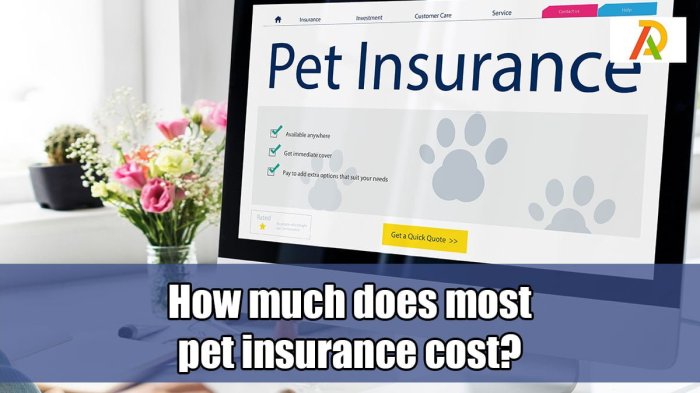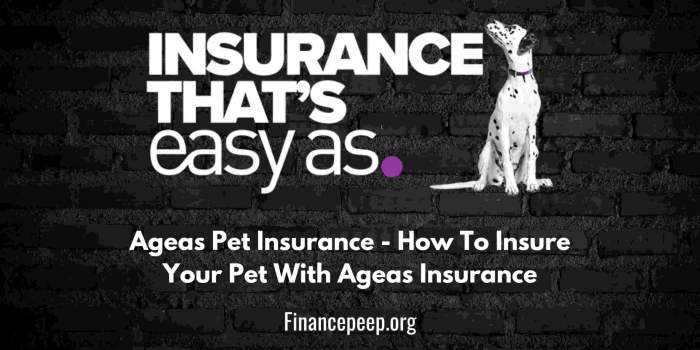Does pets best insurance increase with age? Totally! It’s like, totally a thing, right? Pet insurance premiums ain’t always a fixed price, you know. It depends on a bunch of factors, like the type of pet, their breed, any pre-existing conditions, and, obviously, their age. Getting older can mean more health issues and, consequently, higher vet bills.
So, understanding how age affects pet insurance is crucial for pet parents, especially as their furry friends get into their golden years.
This whole thing is about figuring out how age affects pet insurance costs. We’ll break down all the factors influencing premiums, from breed-specific health issues to pre-existing conditions. Plus, we’ll look at how insurance companies assess risk and adjust premiums based on age. It’s a whole thing, bro. We’ll also explore policy considerations, compare different providers, and give tips for proactive pet care to keep costs down.
Factors Influencing Pet Insurance Premiums
Pet insurance premiums are influenced by a multitude of factors, each contributing to the overall risk assessment. Understanding these factors is crucial for pet owners to make informed decisions about coverage and budgeting.
Factors Affecting Premium Costs, Does pets best insurance increase with age
Several factors play a significant role in determining pet insurance premiums. These factors vary depending on the type of pet and its individual characteristics.
| Factor | Description | Impact on Premium | Example |
|---|---|---|---|
| Pet Type | Different species and breeds have varying health risks. | Certain breeds are predisposed to specific illnesses, increasing premiums. | Large-breed dogs, such as German Shepherds, might have higher premiums due to potential hip dysplasia. |
| Breed-Specific Conditions | Some breeds are genetically prone to certain health issues. | Pre-existing conditions increase premiums significantly. | Golden Retrievers are known to be susceptible to cataracts and certain cancers, impacting premiums. |
| Age | Age significantly impacts health risks and potential expenses. | Older pets are more likely to develop age-related illnesses, leading to higher premiums. | A 10-year-old cat is more prone to kidney disease than a kitten, thus having a higher premium. |
| Pre-existing Conditions | Conditions present before insurance coverage begins. | Existing health problems increase premiums due to increased risk. | A dog with a history of allergies will have a higher premium than a healthy dog. |
| Geographic Location | Veterinary costs can vary by region. | Higher veterinary costs in certain areas may result in higher premiums. | Rural areas might have higher premiums due to limited veterinary options. |
| Activity Level | A pet’s activity level influences potential injury risk. | High-energy pets may have higher premiums due to increased risk of accidents. | A highly active dog might have higher premiums than a laid-back cat. |
Age-Related Impact on Pet Health
Age significantly affects a pet’s health, increasing the likelihood of various illnesses and potentially escalating veterinary expenses. This necessitates careful consideration when assessing pet insurance needs.
Age and Pet Health Issues

Source: bestmoney.com
As pets age, their bodies undergo various physiological changes, making them more susceptible to specific health issues. This understanding is crucial for owners to anticipate and address potential concerns.
| Breed | Life Expectancy | Common Age-Related Issues |
|---|---|---|
| Labrador Retriever | 10-12 years | Hip dysplasia, arthritis, and eye problems |
| Golden Retriever | 10-12 years | Cataracts, cancer, and joint problems |
| German Shepherd | 9-13 years | Hip dysplasia, arthritis, and bloat |
| Cat | 12-15 years | Kidney disease, arthritis, and dental problems |
How Insurance Companies Assess Risk
Insurance companies employ a multifaceted risk assessment process to determine appropriate premiums for older pets. This process considers various factors to quantify the probability of future claims.
Risk Assessment and Age
The risk assessment process for older pets often involves a more in-depth evaluation of their health history and current condition.
Premium Adjustment Strategies
Pet insurance companies employ various strategies to adjust premiums based on a pet’s age. These strategies aim to reflect the increasing health risks associated with aging.
Yo, like, pet insurance gettin’ pricey, right? Does the cost actually go up the older your furry friend gets? I’m tryna find out, cuz my pup is gettin’ up there in age. Maybe checking out Allstate insurance Woodstock IL allstate insurance woodstock il would help me figure out the ins and outs of pet insurance rates.
Either way, I’m still tryna figure out if it’s gonna cost a fortune as my dog ages.
Policy Considerations for Older Pets

Source: adrosi.com
Insurance policies for older pets may have specific provisions and limitations, and owners should be aware of these nuances.
Comparing Different Insurance Providers: Does Pets Best Insurance Increase With Age
Different pet insurance providers adopt varied approaches to age-related premium adjustments. A comparison can help owners select the most suitable plan.
Additional Considerations for Pet Owners

Source: financepeep.org
Proactive health management can significantly influence insurance premiums and overall pet well-being.
Final Thoughts
So, does pet insurance increase with age? Basically, yes, but it’s not always a straight-up hike. It’s more of a nuanced situation, depending on various factors. Understanding how age impacts pet health and insurance premiums is key for responsible pet ownership. By understanding the factors that influence premiums and comparing different insurance providers, pet parents can make smart choices for their furry friends, especially as they get older.
Ultimately, preventative care and open communication with your insurance provider are super important, especially for senior pets.